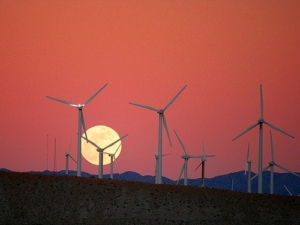Benefits of Renewable Energy
Benefits of Renewable Energy
Earth and our solar system provide us with renewable energy sources like solar and wind. When harvested in the right locations, the sun’s rays and wind can be converted to electricity. In California, solar and wind farms have been erected in places like San Lois Obispo and Tehachapi that are capable of producing a great deal of power. The Alta Wind Energy Centre in Tehachapi is the largest wind farm in the world and it capable of producing 1,020MW. Additionally, the Topaz Solar Farm in San Luis Obispo is one of the world’s largest solar farms and is capable of producing 550MW.
How renewables create energy
Solar energy itself can be used to generate electricity through a principle known as the photoelectric effect. When the sun’s rays strike a surface specially treated to receive them, the resulting excitation is captured and converted into electricity for any number of commercial and residential uses. Heat from the sun is also responsible for driving the winds on our planet, and those winds can be harnessed by wind turbines, which in turn power generators for electricity.
Solar heating also causes water to evaporate, and this water returns to earth in the form of rain or snow, which can then be used as a source for hydroelectric power. All the plants growing in our forests and elsewhere use sunlight for their development, and when this biomass begins to decay in forests, it can be harvested and used as a fuel source for the production of electricity.
Benefits of renewable energy
There are a number of ways that renewable energy sources provide tremendous benefit to our environment, and to humans as well. By their very nature, renewable energy sources constitute a virtually inexhaustible supply of power, and with an ever increasing thirst for power from individuals and businesses on earth, this becomes a crucial point.
As specific industries grow around renewable energy sources, a great many new job opportunities have been created and a vast array of new products have come onto the market which are powered by renewable energy sources. These two facts contribute to growing the economies of nations which make the most use of renewable sources, because they are all new jobs and products. One of the most notable job creators is Tesla, as they strive to invent new products powered by solar technology and have grown from 899 employees in 2010 to 14,000 in 2016.
With several alternatives for electrical energy now available, energy prices have become more stable and more competitive, because there are more options to choose from, rather than the relative monopoly utility companies enjoyed in the past. In addition, renewable energy sources represent a more reliable way of generating electricity because their power source is seemingly endless. Both the environment and the inhabitants of Earth benefit tremendously from widespread use of renewable energy sources, with better health enjoyed by humans and less pollution of the environment.




